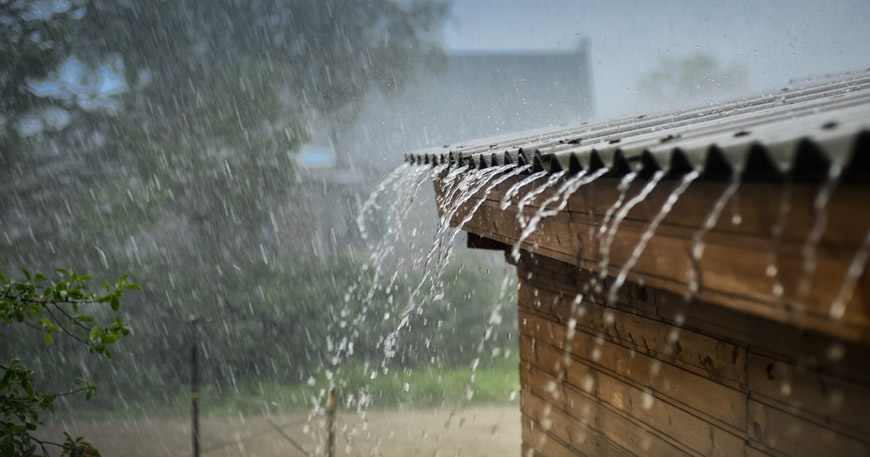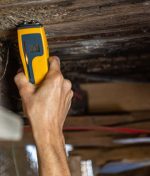How Can You Prepare Your Home for Flooding During Rainy Seasons?

- February 21, 2025
- byadmin
- Flood Restoration
Heavy rainfall and storm surges can lead to unexpected flooding, causing significant damage to homes and businesses. Flooding not only weakens the structural integrity of a property but also leads to mold growth, electrical hazards, and financial burdens. If you live in a flood-prone area or expect an intense rainy season, preparing ahead of time can help prevent costly water damage.
At RAMM Water Restoration, we understand the impact of flooding and want to help homeowners take proactive steps to minimize damage and protect their properties. Below are practical and effective ways to prepare your home for flooding during rainy seasons.
1. Inspect and Maintain Your Drainage System
A well-maintained drainage system ensures that rainwater flows away from your home instead of seeping inside. Here’s what you should do:
- Clean your gutters and downspouts to prevent clogging. Clogged gutters can cause water to overflow and seep into your roof and walls.
- Ensure downspouts direct water away from your foundation by extending them at least 5 feet away.
- Check for low spots around your home where water can accumulate. If necessary, add soil or install a drainage system to redirect water flow.
2. Seal Gaps and Cracks in Your Foundation and Walls
Even minor cracks in your home’s foundation, walls, and basement floors can allow floodwater to enter. To prevent water infiltration:
- Inspect your foundation for cracks and seal them with waterproof masonry caulk or hydraulic cement.
- Check windows and doors for gaps and reinforce them with weatherproof sealants.
- Consider installing flood barriers or sandbags around doors and entry points to block rising water.
3. Install a Sump Pump and Backup Power Source
A sump pump is one of the best investments for homes prone to flooding. It helps remove water from basements and crawl spaces before it can cause major damage.
- Install a sump pump with an automatic float switch that activates when water levels rise.
- Regularly test your sump pump to ensure it’s functioning correctly before heavy rains arrive.
- Have a battery backup system or generator in case of power outages during storms.
4. Elevate Appliances and Electrical Systems
Floodwater can severely damage electrical systems, leading to dangerous hazards and costly repairs. To minimize damage:
- Raise electrical outlets, wiring, and fuse boxes at least one foot above the expected flood level.
- Place major appliances like water heaters and furnaces on concrete blocks to prevent water damage.
- Consider using water-resistant insulation and flooring materials in flood-prone areas of your home.
5. Install Flood Sensors and Water Alarms
Flood sensors and water alarms provide early warnings when water is detected inside your home, allowing you to act quickly before severe damage occurs.
- Place water sensors in basements, near water heaters, and in areas prone to leaks.
- Use smart flood alarms that send alerts to your phone when water levels rise unexpectedly.
- Integrate sensors with your home security system for added protection.
6. Ensure Proper Grading Around Your Home
The slope of your yard plays a crucial role in flood prevention. If your property slopes toward your home, rainwater can pool around your foundation, leading to leaks.
- Adjust the landscaping to ensure water flows away from the house.
- Install a French drain system to redirect rainwater to a safe location.
- Use gravel or porous materials for walkways and driveways to promote better water absorption.
7. Protect Your Important Documents and Valuables
Flooding can lead to irreversible damage to essential documents, photographs, and valuables. Protect them by:
- Storing important papers in waterproof, fireproof safes.
- Keeping digital copies of essential records like insurance policies, property deeds, and medical documents.
- Elevating furniture, rugs, and valuable electronics to prevent water exposure.
8. Review Your Flood Insurance Coverage
Standard homeowner’s insurance policies do not cover flood damage, so it’s essential to review your coverage before the rainy season begins.
- Check if your property is in a high-risk flood zone and consider getting additional flood insurance.
- Understand what your policy covers, including structural damage, personal belongings, and temporary living expenses.
- Document your belongings with photos and videos for easier claims processing.
9. Prepare an Emergency Flood Plan
Having a clear plan in place can make all the difference when a flood occurs.
- Create an emergency kit with essentials like bottled water, non-perishable food, flashlights, batteries, and first-aid supplies.
- Establish an evacuation route and identify safe locations to go if flooding becomes severe.
- Keep emergency contact numbers for local disaster relief agencies, restoration professionals, and insurance providers.
10. Work with Professional Water Damage Restoration Experts
Despite all preventive measures, flooding can still occur. When it does, acting quickly can help minimize long-term damage. Hiring professional water damage restoration services ensures proper cleanup, drying, and mold prevention.
Why professional restoration matters:
- Water extraction and drying to prevent mold growth.
- Sanitization and disinfection to eliminate bacteria from floodwater.
- Structural repairs to restore walls, flooring, and foundations.
- Mold remediation to prevent long-term health hazards.
How We Can Help
At RAMM Water Restoration, we understand how devastating flooding can be. That’s why we provide compassionate, fast, and reliable flood damage restoration services in San Diego. Whether your home has experienced minor leaks or severe flooding, we are here to help you recover with:
- Emergency flood damage restoration – Rapid water removal and drying.
- Mold remediation – Preventing mold growth after water exposure.
- Structural repair and restoration – Restoring your home to pre-flood condition.
- Insurance claim assistance – Helping you navigate the claims process.
Don’t wait until floodwaters take over—contact RAMM Water Restoration today for expert protection and restoration services.









